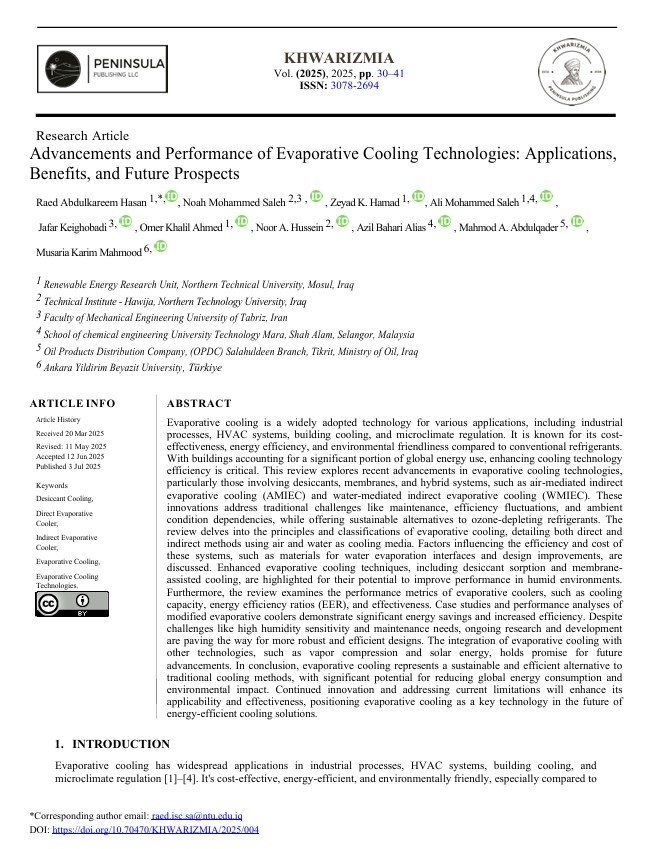Advancements and Performance of Evaporative Cooling Technologies: Applications, Benefits, and Future Prospects
Main Article Content
Abstract
Evaporative cooling is a widely adopted technology for various applications, including industrial processes, HVAC systems, building cooling, and microclimate regulation. It is known for its cost-effectiveness, energy efficiency, and environmental friendliness compared to conventional refrigerants. With buildings accounting for a significant portion of global energy use, enhancing cooling technology efficiency is critical. This review explores recent advancements in evaporative cooling technologies, particularly those involving desiccants, membranes, and hybrid systems, such as air-mediated indirect evaporative cooling (AMIEC) and water-mediated indirect evaporative cooling (WMIEC). These innovations address traditional challenges like maintenance, efficiency fluctuations, and ambient condition dependencies, while offering sustainable alternatives to ozone-depleting refrigerants. The review delves into the principles and classifications of evaporative cooling, detailing both direct and indirect methods using air and water as cooling media. Factors influencing the efficiency and cost of these systems, such as materials for water evaporation interfaces and design improvements, are discussed. Enhanced evaporative cooling techniques, including desiccant sorption and membrane-assisted cooling, are highlighted for their potential to improve performance in humid environments. Furthermore, the review examines the performance metrics of evaporative coolers, such as cooling capacity, energy efficiency ratios (EER), and effectiveness. Case studies and performance analyses of modified evaporative coolers demonstrate significant energy savings and increased efficiency. Despite challenges like high humidity sensitivity and maintenance needs, ongoing research and development are paving the way for more robust and efficient designs. The integration of evaporative cooling with other technologies, such as vapor compression and solar energy, holds promise for future advancements. In conclusion, evaporative cooling represents a sustainable and efficient alternative to traditional cooling methods, with significant potential for reducing global energy consumption and environmental impact. Continued innovation and addressing current limitations will enhance its applicability and effectiveness, positioning evaporative cooling as a key technology in the future of energy-efficient cooling solutions.
Article Details

This work is licensed under a Creative Commons Attribution 4.0 International License.
